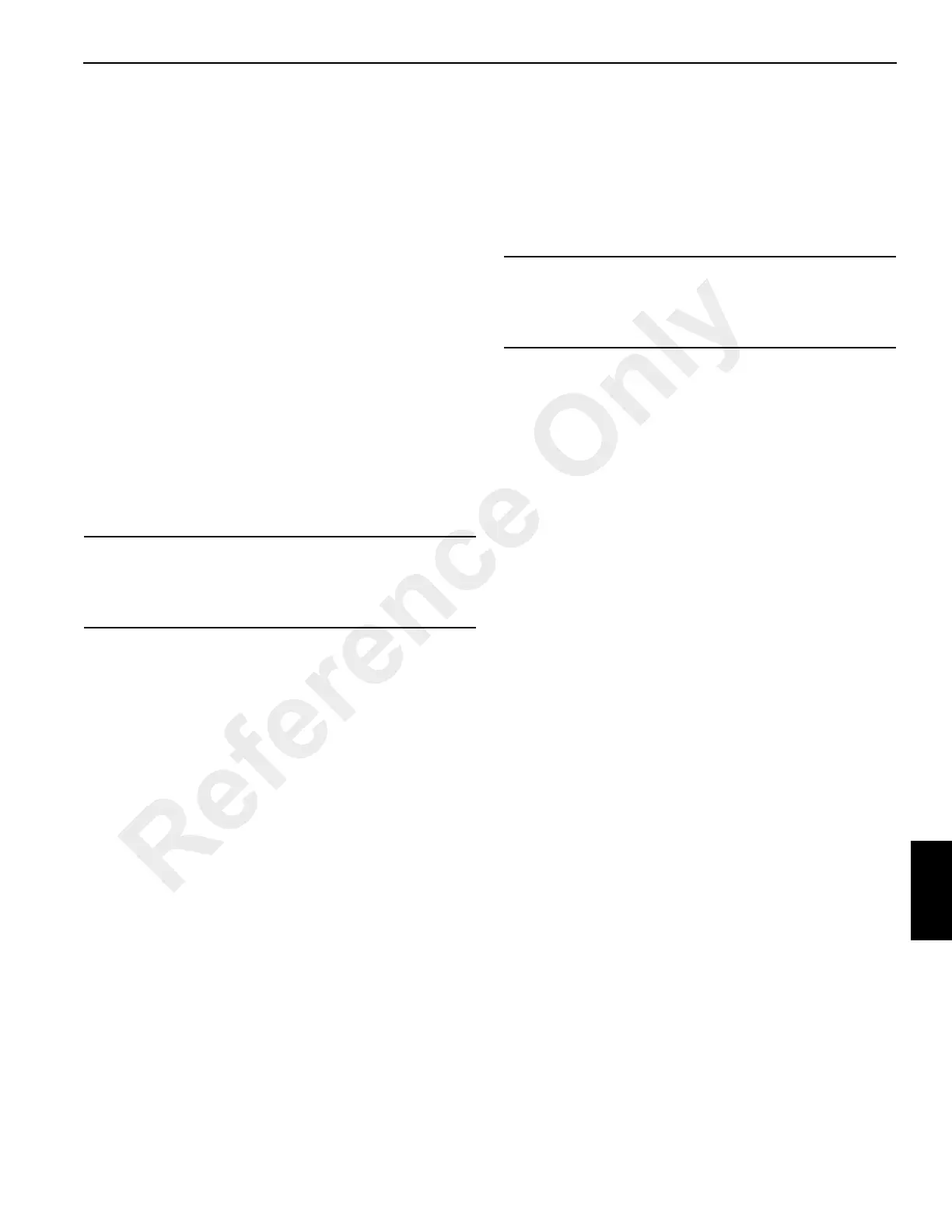Published 4-20-2015, Control # 502-01 8-25
RT540E SERVICE MANUAL UNDERCARRIAGE
6. Attach brake line to inlet port located on top of the
hydraulic cylinder.
7. Apply hydraulic pressure to the brake.
8. With plug removed, loosen coupling nut and set running
clearance to 0.5 to 0.7 mm (0.020 to 0.030 in) total by
adjusting the socket setscrew. Torque the coupling nut
while holding the socket setscrew in position. Torque nut
68 to 75 Nm (50 to 55 lb-ft).
9. Replace plug. Torque plug 61 to 68 Nm (45 to 50 lb-ft).
10. Even up running clearance to 0.25 to 0.3 mm (0.010 to
0.015 in) each side by adjusting the socket head
capscrew.
NOTE: Re-adjust the brake when running clearance
reaches a total of 2.54 mm (0.100 in).
11. Position the Park Brake switch to On (press top of
switch) and shut down the engine.
Adjustment
1. Chock the wheels to prevent crane movement.
2. Start the engine, ensure the transmission is in neutral,
and position the Park Brake switch to Off (press bottom
of switch). This will pressurize the brake actuator to
release the tension on the brake linkage. Air pressure of
1862 kPa (270 psi) may be used to pressurize the
actuator. Screw the caging nut up under the actuator
chamber.
3. Install the rod ball joint until the ball joint will just connect
to the brake linkage with the brake lever in a horizontal
position.
4. Lock the rod ball joint with the jam nut and back off the
caging nut.
5. Position the Park Brake switch to On (press top of
switch) and shut down the engine.
PARKING BRAKE
Description
The parking brake is mounted on the transmission. The
brake is a disc-type brake that is controlled by a switch on
the front console in the cab and is spring-applied and
hydraulically released by an actuator.
Maintenance
Removal
1. Chock the wheels to prevent crane movement.
2. Start the engine, ensure the transmission is in neutral,
and position the Park Brake switch to Off (press bottom
of switch). This will pressurize the brake actuator to
release the tension on the brake linkage. Air pressure of
1862 kPa (270 psi) may be used to pressurize the
actuator. Screw the caging nut up under the actuator
chamber.
3. Position the Park Brake switch to On (press top of
switch) and shut down the engine.
4. Tag and disconnect the hydraulic hose from the actuator.
Cap or plug all openings.
5. Unthread the two mounting bolts securing the brake
assembly to the mounting bracket, then carefully
remove the brake assembly from the mounting bracket
and the brake disc.
Installation
1. Position the brake over the disc and align mounting
bracket holes.
2. Thread the mounting bolts into the mounting bracket
until the caliper is centered over the brake disc.
3. Torque the jam nuts to 136 to 163 Nm (100 to 120 lb-ft)
against the mounting bracket.
4. Connect the hydraulic hose to the actuator.
5. Start the engine, ensure the transmission is in neutral,
and position the Park Brake switch to Off (press bottom
of switch). This will pressurize the brake actuator to
release the spring tension. Unscrew the caging nut from
under the actuator chamber.
6. Position the Park Brake switch to On (press top of
switch) and shut down the engine.
CAUTION
Do not exceed 1861.5 kPa/18.6 bar (270 psi) hydraulic
pressure to avoid damage to the brake. 1172.1kPa/11 bar
(170 psi) is required to fully release the brake.
CAUTION
Do not exceed 1861.5 kPa/18.6 bar (270 psi) hydraulic
pressure to avoid damage to the brake. 1172.1kPa/11 bar
(170 psi) is required to fully release the brake.
Reference Only
